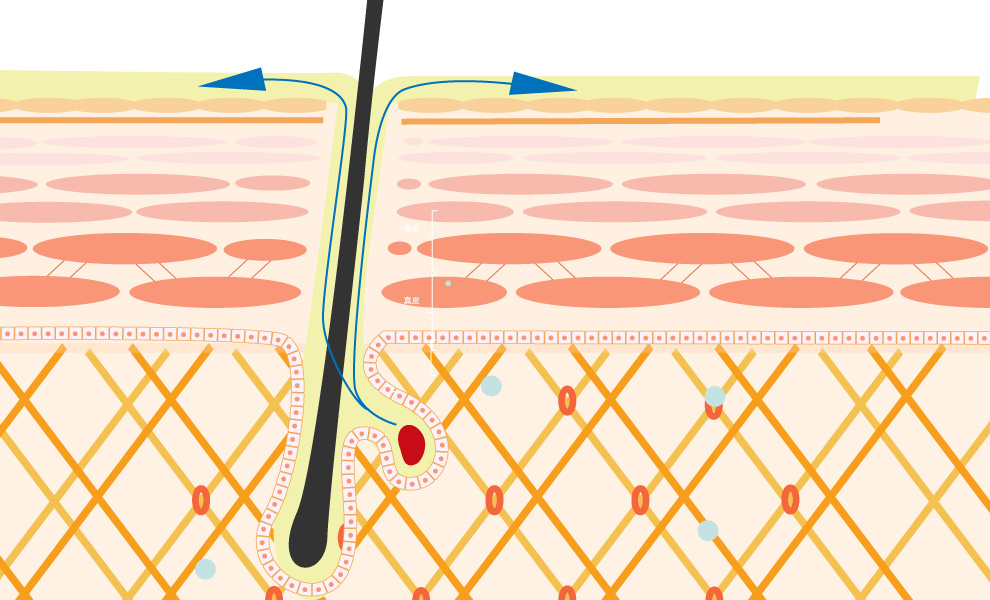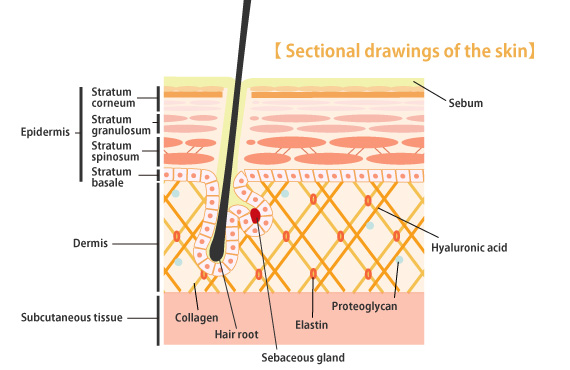
Skin is the largest organ of human body. It produces sweat and sebum that makes the sebum barrier to protect the body from invasive infection by pathogenic organisms. It also has high for supplying blood to help control protection against cold. Skin forms the moisture barrier and acts as the sensory organ for touch, temperature changes and pain.
Skin consists of the “epidermis” that forms the outer barrier, and the “dermis” where the sebaceous glands are situated.

Epidermis
The epidermis is very thin layer and the outermost surface of the skin. It has the role of a barrier against outside stimulation by water, ultra violet and bacteria. The epidermis is divided into four parts, the stratum corneum, stratum granulosum, stratum spinosum and stratum basale.
Dermis
The dermis is situated beneath the epidermis. It is a thick layer comprising collagen, elastin, hyaluronic acid and dermatan sulfate which help to maintain moisture and elasticity in the skin. The dermis also has the capillaries, lymphatic vessels, nerves, sebaceous glands and hair roots that support the supply of essential nutrient factors to the skin. They also help in the production of sebum for the sebum barrier to protect the skin.
Subcutaneous tissue
The bottom layer of the skin is called Subcutaneous tissue that is almost entirely made up of subcutaneous fat It has the important functions of keeping body temperature, providing a cushion against outside irritation and preserving energy.
Sebocytes in sebaceous gland produce sebum which migrates to the surface of the skin through pores. Sebum provides a protective barrier and covers the surface of the skin, to help maintain the moisture retention action. It also provides bactericidal action and the alleviation of exogenous stimulation. The sebaceous glands are crucial for the maintenance of barrier functions of a healthy body.